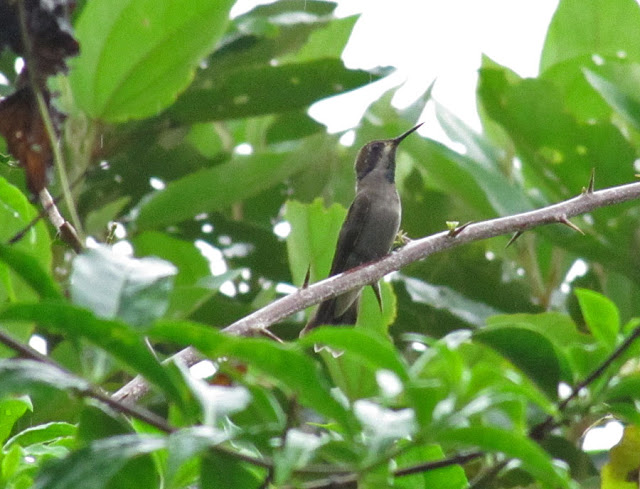On November 29, while waiting out on the noontime drizzle at Cerro Azul's Birders' view, Rosabel Miró and Juan Pablo Ríos had a Brown Violetear visiting the back yard's white-flowered bushes. The bird was later seen at the tree with white flowers on the side of the house. Un poco antes de las 11:45 de la mañana, bajo una leve llovizna, llegó a los arbustos de flores rosadas, pero esta vez a los de flores blancas, un visitante raro y que primera vez se reporta para el patio de Birders’ View: el Brown Violetear. Esta ave también fue vista en el árbol con flores blancas al costado de la casa. There's a lot of flowers, and a lot of hummingbirds around, including the regular Violet-capped Hummingbird and an abundance of the very irregular Green Thorntail . Hoy lunes 29 de noviembre de 2010, a eso de las 10:27, en una mañana de neblina y llovizna, se acercó a los arbustos de flores rosadas ('estrellitas') que están en el patio trasero de Birders’ View, Alt...


